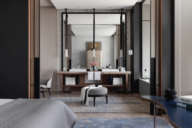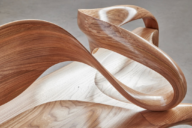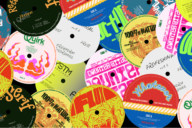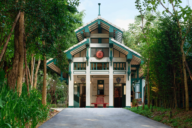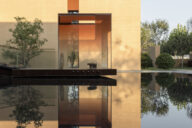BI-CITY BIENNALE OF URBANISM //ARCHITECTURE (UABB) // SHENZHEN, CHINA
Architecture biennales and triennials have become a vital part of the culture of modern architecture. Every two or three years, they debut groundbreaking ideas, explore popular themes, and showcase the best of what is happening in the discipline, for both today and tomorrow.
The Bi-City Biennale of Urbanism Architecture (UABB) is currently the only bi-annual exposition in the world to be based exclusively on the themes of city and urbanisation and explores ideas through a combination of modern technology, art, innovation and social awareness.
Organised by the two neighbouring and closely interacting cities of Shenzhen and Hong Kong UABB lies within the Pearl River Delta region, in south-west China and has set ‘urbanisation’ as its long-term theme. As urban development and construction affect urban space and the cultural environment, the biennale examines the activities and processes accompanying the transformation. These include city planning practices, architectural design, and green and eco-environmental issues, connecting China to the global dialogue on the problems and potential of the development of urbanisation.
Themed as ‘Cities Grow in Difference,’ the recent UABB (Shenzhen) featured more than 200 exhibitors from over 25 countries gathered in Nantou Old Town, a historical gem nestled amongst Shenzhen’s neon lights and glistening skyscrapers.
Contemporary China has undergone more than three decades of rapid-paced urban development and this was the first biennial to take place in an urban village. This edition integrated with the renewal plan of Nantou Old Town by positioning the exhibitions into the residents’ daily life and spreading them throughout the streets, alleyways, houses, shops and factories making people rethink the usage of urban villages, cities and public spaces.
As well as variously themed academic workshops and lectures more diverse and eclectic events also take place, such as live theatre performances, street art, dance, parkour and photography exhibitions.
UABB reflected on the urban development within a globalised context and worked towards establishing a vision of future cities through works that merged architecture, art and design. Calling for urban diversity and inclusiveness UABB transcended the notion that urbanism and architecture happenings are just professional events for city planners and architects, but can be a popular subject matter attracting plenty of public attention and a long-lasting platform for communicating urban knowledge.
Past, Present, Future
Initiated in 2005 by Shenzhen and later co-organized by the two neighboring and closely interacting cities of Shenzhen and Hong Kong, UABB situates itself within the regional context of the rapidly urbanizing PRD. Curated by China’s “Father of Architecture” Zhang Yung Ho, the first UABB was themed “City, Open Door!”.
Since then, UABB has gathered crowds from all over the world, making it an internationally acclaimed event. 2007’s edition was themed ‘City of Expression and Regeneration’ and was curated by Qingyun Ma. As UABB moved from passive observation to active intervention, 2009 was themed ‘City Mobilisation’ and was curated by Ou Ning. Terence Riley was the first non-Chinese curator for UABB in 2011 and curated it under the theme ‘Architecture creates Cities.
Cities create Architecture’. The 2013 exhibition themed ‘Urban Border’ curated by Ole Bouman, Xingning Li, and Jeffrey Johnson explored the distinctions between Shenzhen and Hong Kong, the biennale transformed two neglected industrial sites in the Shekou. 2015 had Aaron Betsky, Alfredo Brillembourg, Hubert Klumpner, and Doreen Heng Liu guiding the biennale under the theme ‘Re-living the city’.
In 2017 the curatorial team lead UABB 2017 to greater heights under the theme of ‘Cities, Grow in Difference’.
















